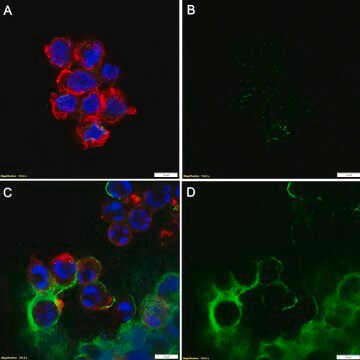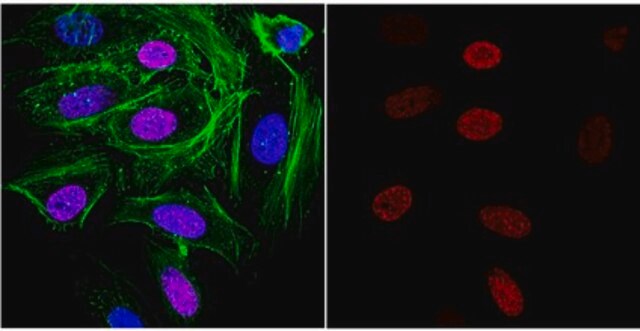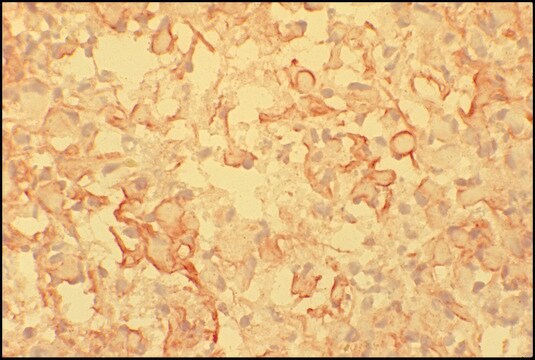16-256
Anti-Phosphatidylserine Antibody, clone 1H6, Alexa Fluor™ 488
clone 1H6, Upstate®, from mouse
Sinónimos:
488-Alexa Fluor Antibody, Alexa Fluor 488 Detection, Clone 1H6 Anti-Phosphatidylserine
About This Item
Productos recomendados
biological source
mouse
Quality Level
conjugate
ALEXA FLUOR™ 488
antibody form
purified immunoglobulin
antibody product type
primary antibodies
clone
1H6, monoclonal
species reactivity
vertebrates
manufacturer/tradename
Upstate®
technique(s)
flow cytometry: suitable
isotype
IgG
shipped in
wet ice
target post-translational modification
phosphorylation (pSer)
General description
Anti-Phosphatidylserine may be used to detect translocation of the membrane phospholipid phosphatidylserine (PS) from the inner to the outer cell membrane leaflet; it provides an alternative to Annexin V for quantitation of apoptosis.
Specificity
Immunogen
Application
Apoptosis & Cancer
Apoptosis - Additional
Quality
Apoptosis Assay: Time course for induction of apoptosis in Jurkat cells by staurosporine, measured using either an Anti-Phosphatidylserine, clone 1H6, Alexa Fluor™ 488 conjugate or an Annexin V FITC conjugate.
Physical form
Storage and Stability
Analysis Note
Negative Control: Catalog # 16-240, Normal Mouse IgG, Alexa Fluor™ 488-conjugate.
Other Notes
Legal Information
Disclaimer
Unless otherwise stated in our catalog or other company documentation accompanying the product(s), our products are intended for research use only and are not to be used for any other purpose, which includes but is not limited to, unauthorized commercial uses, in vitro diagnostic uses, ex vivo or in vivo therapeutic uses or any type of consumption or application to humans or animals.
¿No encuentra el producto adecuado?
Pruebe nuestro Herramienta de selección de productos.
Storage Class
12 - Non Combustible Liquids
wgk_germany
WGK 2
flash_point_f
Not applicable
flash_point_c
Not applicable
Certificados de análisis (COA)
Busque Certificados de análisis (COA) introduciendo el número de lote del producto. Los números de lote se encuentran en la etiqueta del producto después de las palabras «Lot» o «Batch»
¿Ya tiene este producto?
Encuentre la documentación para los productos que ha comprado recientemente en la Biblioteca de documentos.
Nuestro equipo de científicos tiene experiencia en todas las áreas de investigación: Ciencias de la vida, Ciencia de los materiales, Síntesis química, Cromatografía, Analítica y muchas otras.
Póngase en contacto con el Servicio técnico








